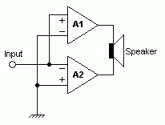When testing, all my outlets report Open Ground.
My inverter is properly grounded to a grounding rod outside, but I believe the reason for the Open Ground, is because inside my inverter the Ground & Neutral wires are not bonded. I'm wondering if there is a shock risk, if there was ever a short to the refrigerate or something metal.
It's also preventing sensitive equipment, like my Car charger to work of the Inverter, due to the open ground.
I purchased this inverter on ebay: https://www.ebay.com/itm/Power-Inve...-110V-120V-Car-Truck-Carvan-Boat/202875230081
It appears in this inverter neutral is not bonded inside the inverter to ground. Ground is instead connected to the chassis. I was thinking to resolve the problem, I should bond the Neutral & Ground wires.
I asked the seller and they responded back no. see below for their response
I'm thinking they're incorrect, and that's what I should do, but does anyone else have any experience neutral bonding / open ground on a system like this?
thanks in advance
My inverter is properly grounded to a grounding rod outside, but I believe the reason for the Open Ground, is because inside my inverter the Ground & Neutral wires are not bonded. I'm wondering if there is a shock risk, if there was ever a short to the refrigerate or something metal.
It's also preventing sensitive equipment, like my Car charger to work of the Inverter, due to the open ground.
I purchased this inverter on ebay: https://www.ebay.com/itm/Power-Inve...-110V-120V-Car-Truck-Carvan-Boat/202875230081
It appears in this inverter neutral is not bonded inside the inverter to ground. Ground is instead connected to the chassis. I was thinking to resolve the problem, I should bond the Neutral & Ground wires.
I asked the seller and they responded back no. see below for their response
Dear,
good day,
no, we do not recommend to connect the ground to neutral, it will make the shell of the inverter have the electricity
good day,
no, we do not recommend to connect the ground to neutral, it will make the shell of the inverter have the electricity
I'm thinking they're incorrect, and that's what I should do, but does anyone else have any experience neutral bonding / open ground on a system like this?
thanks in advance





